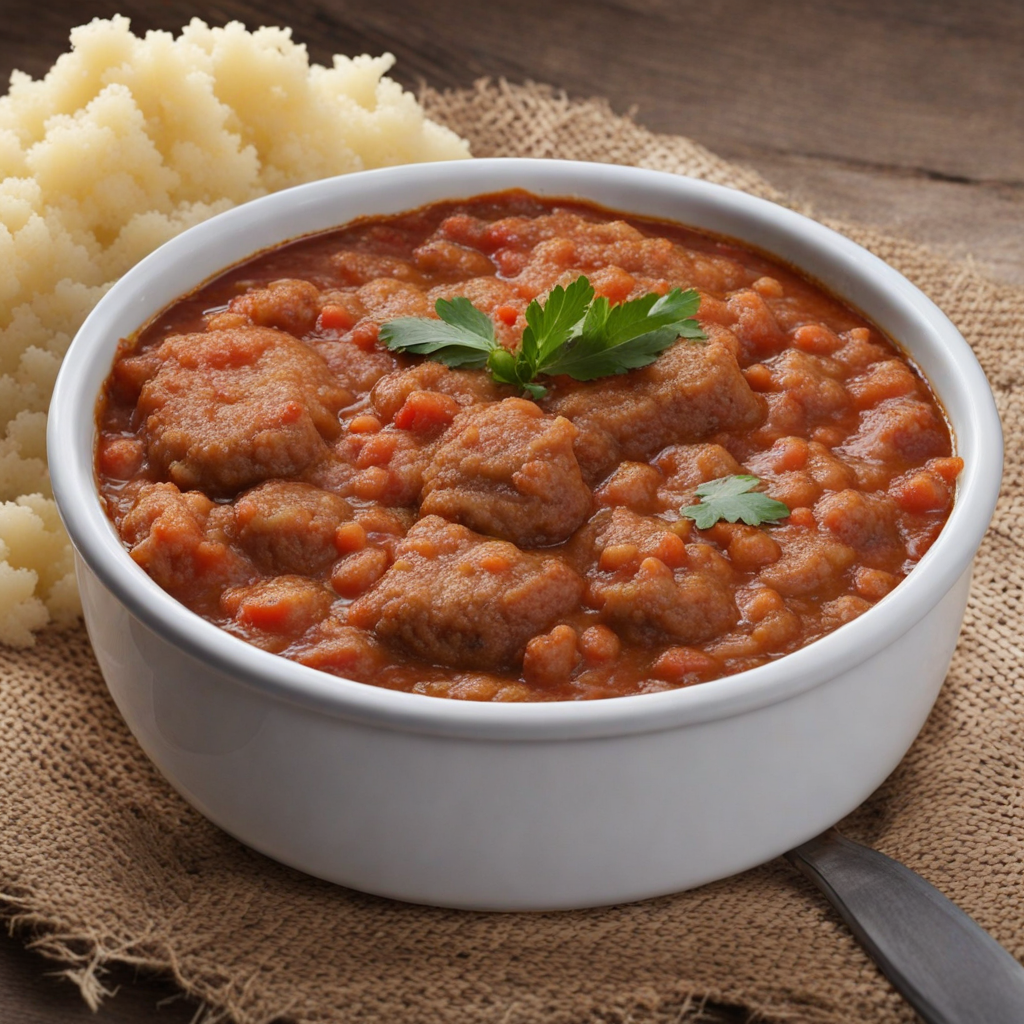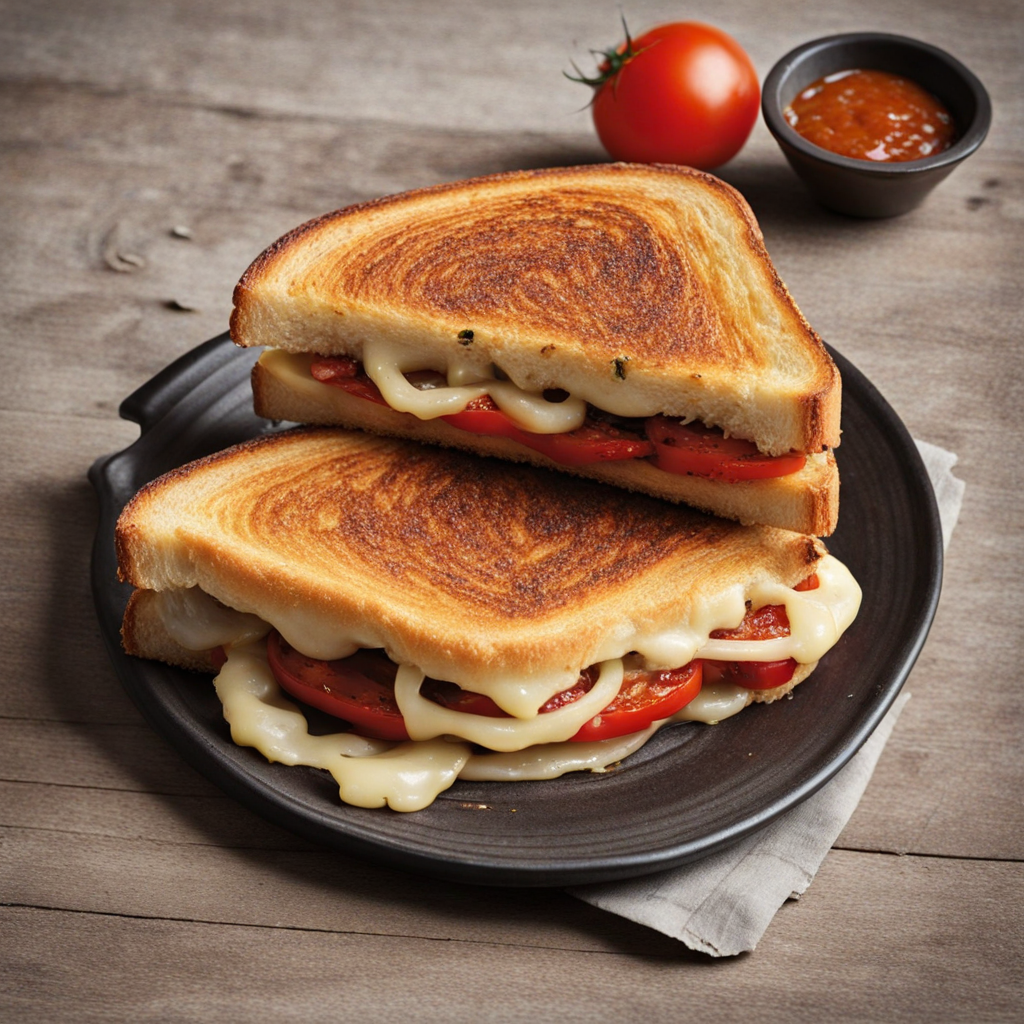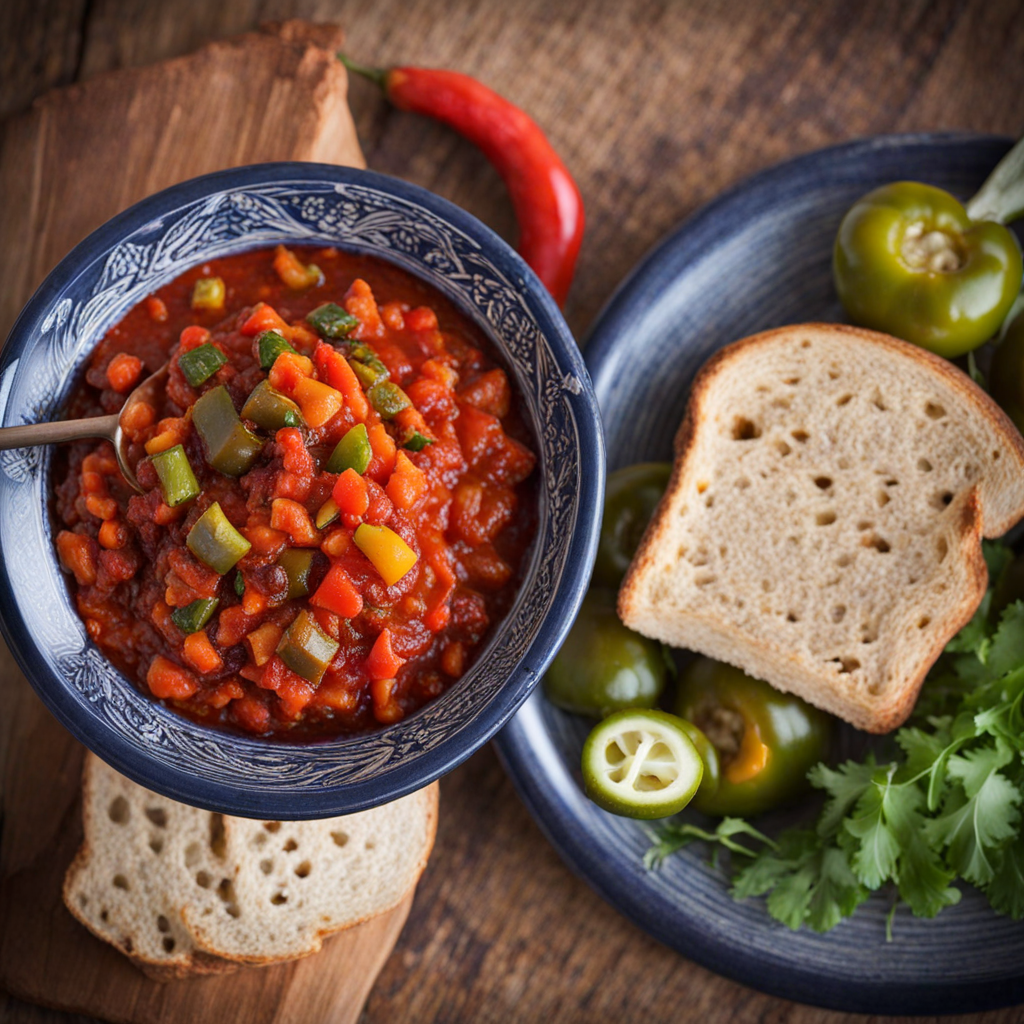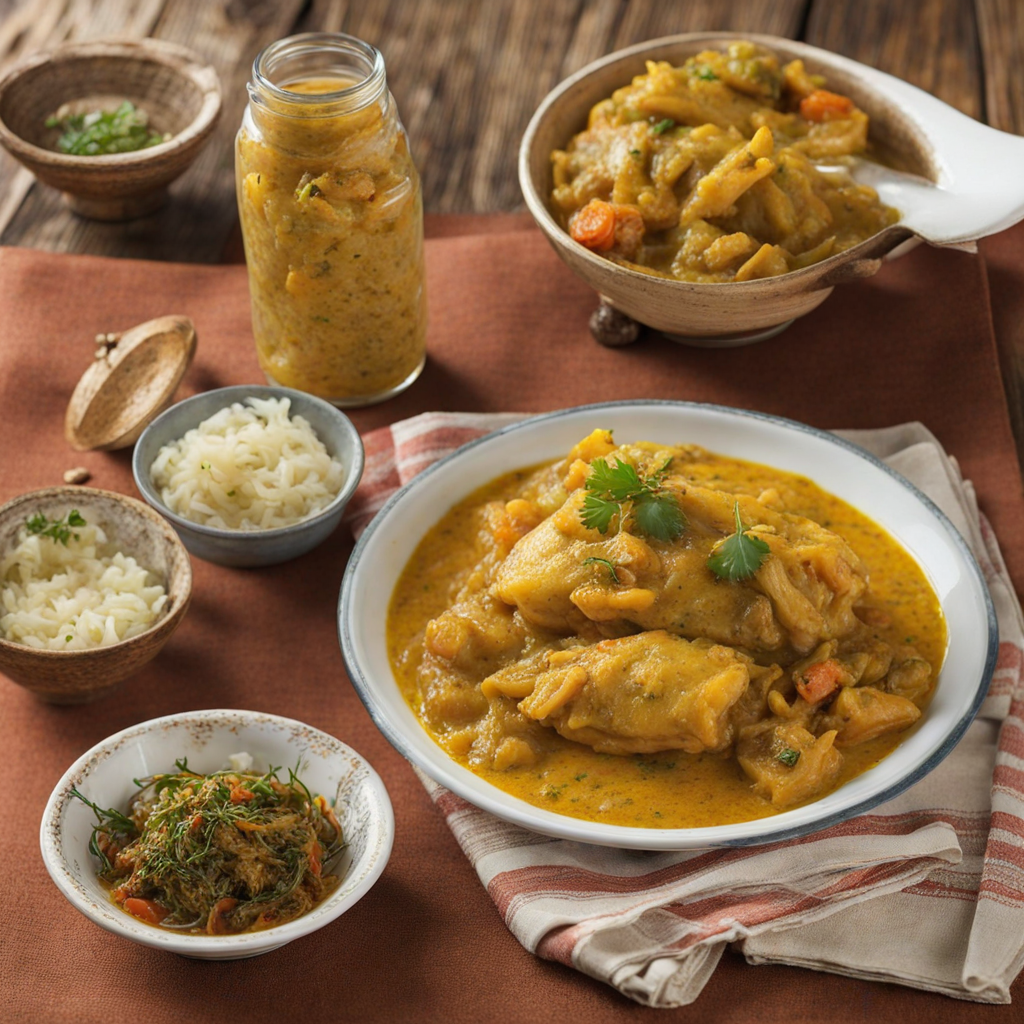Pap
Pap is a traditional South African staple made primarily from ground maize (corn), similar to polenta or grits, and is a beloved dish that embodies the essence of South African cuisine. The preparation of pap is straightforward, requiring just maize meal and water, which are cooked together to create a smooth, thick porridge. The texture can vary from a soft, creamy consistency to a firmer, more solid form, depending on personal preference and regional variations. It is often enjoyed as a base for a variety of hearty stews, meats, and sauces, making it a versatile accompaniment in many meals. The flavor of pap is mild and slightly nutty, allowing it to absorb the spices and flavors of the dishes it is served with. This adaptability makes it perfect for complementing rich, savory sauces, such as a spicy tomato stew or a flavorful braai (barbecue) meat dish. Pap is often served with a side of chakalaka, a spicy vegetable relish, which adds a zesty kick and enhances the overall experience. Its ability to balance bold flavors while providing a comforting, filling base is what makes pap a favored choice among both locals and visitors. In South African culture, pap is more than just food; it represents community and togetherness. Traditionally served in a communal pot, it encourages sharing and bonding over a meal. Whether enjoyed at a family gathering, a festive occasion, or a casual braai, pap is a dish that brings people together, inviting everyone to savor its simplicity and heartiness. Discovering pap is a delightful journey into South Africa's rich culinary heritage, offering a taste of the country's diverse flavors and traditions.
How It Became This Dish
The History of Pap: A Staple of South African Cuisine Pap, a traditional South African dish made from ground maize (corn), holds a significant place in the culinary landscape of the region. The term "pap" itself is derived from the Afrikaans word for porridge, which aptly describes its soft and smooth texture. The origins, cultural significance, and evolution of pap reflect the rich tapestry of South African history, influenced by indigenous practices, colonial encounters, and contemporary adaptations. #### Origins The roots of pap can be traced back to the indigenous communities of southern Africa, particularly the Khoisan people, who were among the first inhabitants of the region. Maize, though not native to Africa, was introduced to the continent in the 16th century by European explorers and traders. Originally cultivated by the indigenous peoples of the Americas, maize quickly adapted to the climate and soil of southern Africa, becoming a staple food for many communities. The Tswana and Xhosa peoples, among others, incorporated maize into their diets, and its versatility allowed it to be prepared in various ways. The traditional method of making pap involves cooking the ground maize with water to create a thick porridge. This technique not only showcases the resourcefulness of these communities but also reflects their deep connection to the land and its resources. #### Cultural Significance Pap transcends mere sustenance in South African culture; it is a symbol of identity, community, and resilience. For many South Africans, pap is more than just a food item; it is a cultural artifact that evokes memories of family gatherings, communal meals, and shared traditions. It often serves as a base for various dishes, absorbing the flavors of accompanying sauces and stews, such as chakalaka (a spicy vegetable relish) or meat dishes like boerewors (farmers' sausage). In many households, pap is a daily staple, consumed at breakfast, lunch, or dinner. Its simplicity allows it to be paired with a wide range of ingredients, making it a versatile choice for families across different socioeconomic backgrounds. Additionally, pap is often prepared in different consistencies, from thick and dough-like to a thinner porridge, depending on personal preference and regional variations. #### Development Over Time As South Africa underwent significant social and political changes, so too did the role and preparation of pap. The arrival of European settlers in the 17th century introduced new culinary practices and ingredients, which began to influence local food traditions. The Dutch, British, and other European settlers brought their own recipes and cooking methods, leading to a fusion of culinary influences. During the colonial period, the introduction of wheat and other grains began to alter the traditional maize-based diet. However, maize remained a crucial food source, particularly for the black majority who faced dispossession and marginalization. The apartheid era further entrenched food inequalities, with many black South Africans relying on pap as a primary source of nourishment. It became a symbol of endurance and survival, representing the struggles of those who resisted oppression. In the late 20th century, as South Africa transitioned to democracy, pap maintained its status as a beloved staple while also evolving alongside a changing society. The end of apartheid brought about a renewed interest in indigenous foods and culinary heritage, fostering a sense of pride in traditional dishes like pap. Chefs and home cooks alike began to experiment with new flavors, incorporating modern techniques and ingredients while honoring the dish's roots. #### Modern Interpretations Today, pap is celebrated not only as a traditional dish but also as a canvas for culinary creativity. The rise of fusion cuisine has led to innovative interpretations of pap, blending it with international flavors and cooking styles. Chefs in urban centers like Johannesburg and Cape Town experiment with gourmet presentations of pap, pairing it with contemporary sauces, proteins, and vegetables drawn from diverse culinary traditions. Moreover, the increasing awareness of food security and sustainability has prompted a resurgence in the popularity of maize as a local crop. Farmers are encouraged to cultivate maize using traditional methods, contributing to a movement that values heritage crops and promotes biodiversity. This aligns with a growing recognition of the importance of food sovereignty, where communities have the right to define their own food systems. #### Pap in Contemporary South Africa In contemporary South Africa, pap remains a unifying dish that cuts across racial and cultural lines. It is commonly served at braais (barbecues), family gatherings, and festive occasions, underscoring its role in social cohesion. Festivals celebrating South African food culture often showcase pap alongside other traditional dishes, reinforcing its significance in the national culinary identity. The digital age has also played a role in the resurgence of traditional foods, with social media platforms serving as a space for sharing recipes, cooking tips, and personal stories related to pap. Food bloggers and influencers highlight its versatility, encouraging younger generations to embrace their culinary heritage while adapting it to contemporary tastes. #### Conclusion The history of pap in South Africa is a rich narrative interwoven with themes of survival, identity, and cultural pride. From its indigenous roots to its evolution through colonial influences and modern interpretations, pap reflects the resilience of a nation shaped by diverse culinary traditions. As South Africans continue to celebrate and innovate around this beloved dish, pap stands as a testament to the enduring power of food to connect people, tell stories, and preserve cultural heritage. In every spoonful of pap, there lies a taste of history, community, and a shared future.
You may like
Discover local flavors from South Africa







